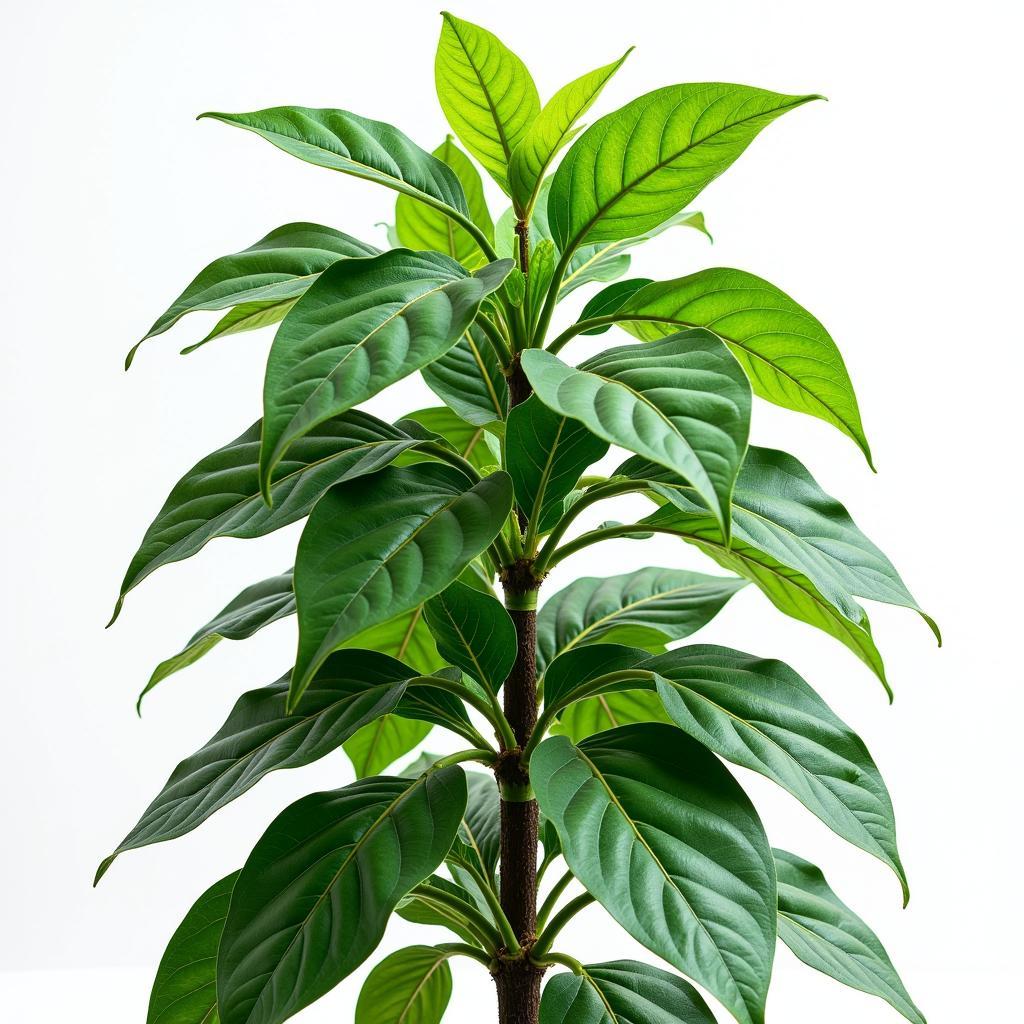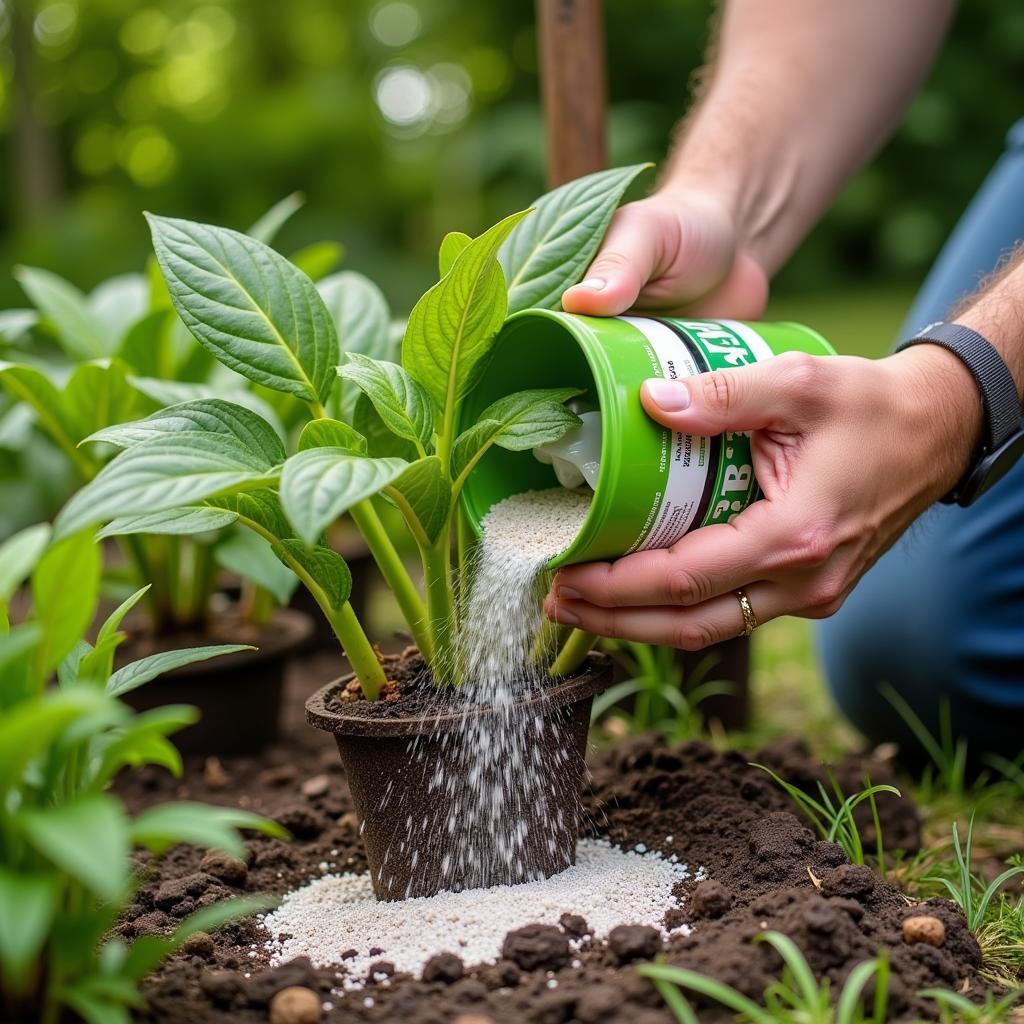Magnesium Plant Food is a vital nutrient for healthy plant growth, contributing significantly to photosynthesis and chlorophyll production. Without sufficient magnesium, your plants can suffer, leading to yellowing leaves and stunted growth. Understanding the importance of magnesium and how to use magnesium-rich plant food can transform your gardening success.
Why is Magnesium Plant Food So Important?
Magnesium plays a crucial role in several key plant processes. It’s a central component of chlorophyll, the pigment responsible for capturing sunlight for photosynthesis. This means that without enough magnesium, plant food with iron and magnesium won’t be as effective, and your plants won’t be able to efficiently convert light into energy. Beyond photosynthesis, magnesium also helps with nutrient uptake, enzyme activation, and overall plant vigor.
Signs of Magnesium Deficiency in Plants
How can you tell if your plants need a boost of magnesium? Several tell-tale signs can alert you to a deficiency. These include interveinal chlorosis (yellowing between the leaf veins while the veins remain green), leaf curling, and premature leaf drop. If you notice these symptoms, it’s likely time to consider supplementing with magnesium plant food.  Healthy Plant Growth with Magnesium Supplement
Healthy Plant Growth with Magnesium Supplement
Choosing the Right Magnesium Plant Food
The market offers a variety of magnesium plant foods, including Epsom salts, magnesium sulfate, and specialized fertilizers. When choosing, consider the type of plants you’re growing and the severity of the deficiency. Some plants, such as tomatoes and roses, are particularly heavy magnesium feeders and may benefit from regular supplementation.
Applying Magnesium Plant Food Effectively
For optimal results, apply magnesium plant food according to the product instructions. Over-application can be just as detrimental as a deficiency, so it’s essential to follow the recommended dosage. You can apply magnesium plant food as a foliar spray for quick absorption or directly to the soil for a slower release. Remember that the effectiveness of systemic rose food and other specialized fertilizers is often enhanced by ensuring adequate magnesium levels in the soil.
Magnesium and Other Nutrients: A Synergistic Relationship
Magnesium works in concert with other nutrients to promote healthy plant growth. For example, it aids in the absorption of phosphorus and potassium, essential for root development and overall plant health. Therefore, it’s crucial to consider the balance of nutrients in your plant food and ensure your plants receive a well-rounded diet. Many gardeners find that using a balanced plant food for acid loving plants, supplemented with magnesium when needed, provides excellent results.
Dr. Jane Green, a leading horticulturalist, explains, “Magnesium is like the unsung hero of plant nutrition. It’s often overlooked, but it plays a vital role in overall plant health and vigor.”
Another expert, Mr. David Brown, a seasoned gardener with over 30 years of experience, adds, “Don’t underestimate the power of magnesium plant food. It can truly transform the health and productivity of your garden.”
 Applying Magnesium Plant Food to Garden Plants
Applying Magnesium Plant Food to Garden Plants
Conclusion
Magnesium plant food is an essential tool for any gardener seeking vibrant, healthy plants. By understanding the importance of magnesium and how to use it effectively, you can unlock the full potential of your garden and enjoy a bountiful harvest. Don’t let magnesium deficiency hold your plants back; give them the boost they need with magnesium plant food and watch them thrive. Remember that maintaining proper nutrition, including adequate magnesium levels, is just as important as understanding food and power dynamics in our daily lives. For specific dietary advice relating to human health, please consult with a healthcare professional. This article is solely focused on the benefits of magnesium for plant health.
FAQ
- What are the signs of magnesium deficiency in plants?
- How often should I apply magnesium plant food?
- Can I use Epsom salts as a magnesium supplement for my plants?
- What is the best way to apply magnesium plant food?
- How does magnesium interact with other plant nutrients?
- What types of plants benefit most from magnesium supplementation?
- How can I test my soil for magnesium levels?
Related Scenarios and Questions
- Yellowing Leaves on Tomato Plants: If your tomato plants are showing yellowing between the veins, especially on older leaves, it’s a strong indication of magnesium deficiency. Consider supplementing with magnesium plant food.
- Stunted Growth in Roses: Roses are heavy feeders and often require extra magnesium. If your roses are not growing as vigorously as expected, a magnesium deficiency could be the culprit.
- Leaf Drop in Acid-Loving Plants: While acid-loving plants like azaleas and rhododendrons often require specific fertilizers, they can also suffer from magnesium deficiency. Look for signs of yellowing or leaf drop.
Further Exploration
Consider reading our articles on sculpt nation foods that kill testosterone for information relating to human health and nutrition.
Need help with your plants? Contact us at Phone Number: 02437655121, Email: minacones@gmail.com or visit our address: 3PGH+8R9, ĐT70A, thôn Trung, Bắc Từ Liêm, Hà Nội, Việt Nam. We have a 24/7 customer service team ready to assist you.